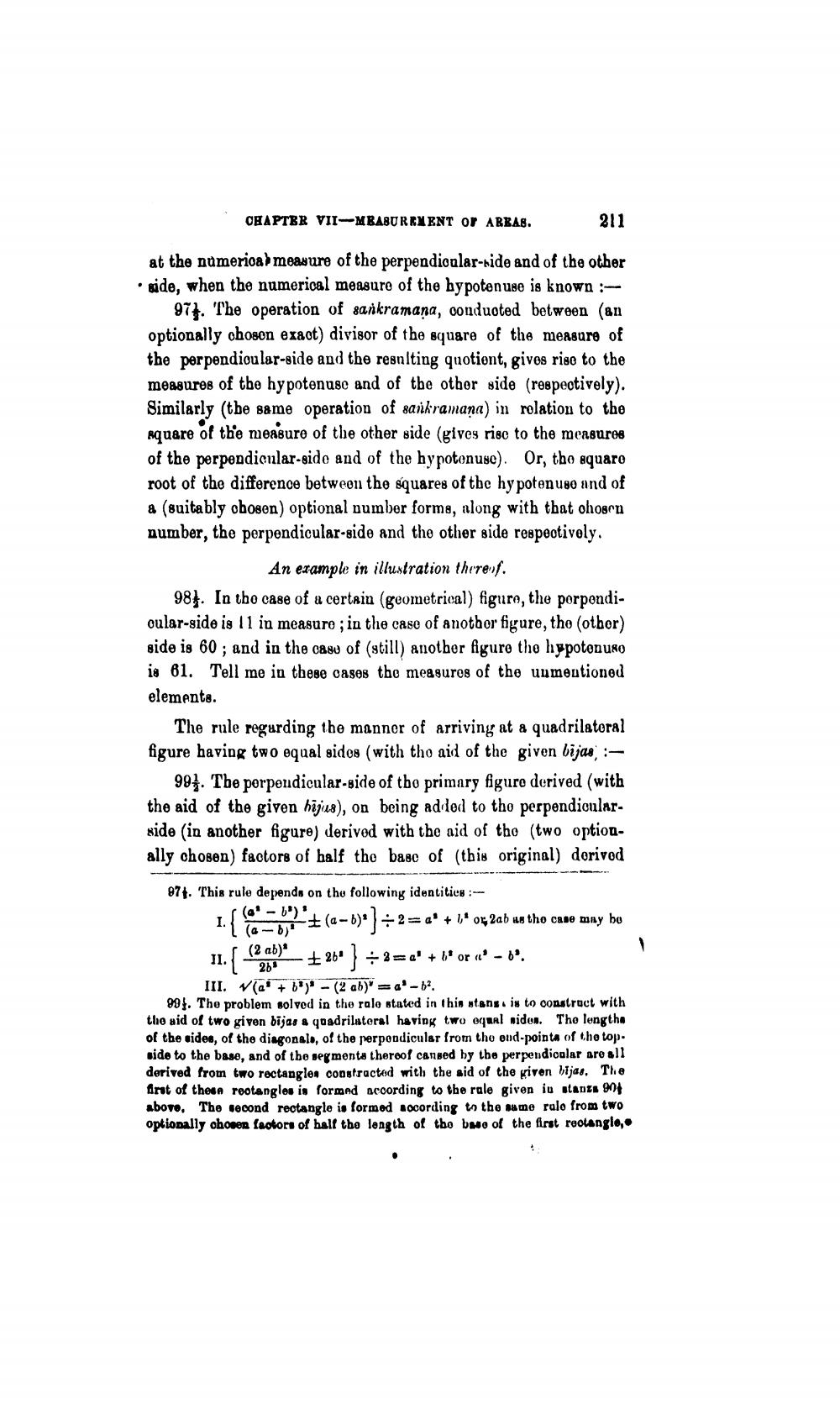________________
OHAPTER VII-MBABUREMENT OF AREAS.
201
at the numerioa) measure of the perpendionlar-ride and of the other side, when the numerical measure of the hypoten use is known :
971. The operation of sankramana, conduoted between (an optionally choson exact) divisor of the square of the measure of the perpendicular-side and the resnlting quotient, gives rise to the measures of the hypotenuse and of the other side (respectively). Similarly (the same operation of sankramana) in relation to the square of the measure of the other side (gives rise to the mcasures of the perpendicular-side and of the hypotonuse). Or, tho squaro root of the difference between the squares of the hypoten uso and of a (suitably chosen) optional number forms, along with that chosen number, the perpendicular-side and the other side respectively,
An example in illustration theref. 981. In the case of a certain (geometrical) figure, the porpondioular-side is 11 in measure ; in the case of another figure, the (other) side is 60 ; and in the cas of (still) another figure the hypotonuso is 61. Tell me in these cases the measures of the uumentioned elements.
The rule regarding the manner of arriving at a quadrilateral figure having two equal sidos (with the aid of the given bijas :
991. The perpendicular-side of the primary figure derived (with the aid of the given hajius), on being adiled to the perpendicularside (in another figure) derived with the aid of tho (two optionally chosen) factors of half the base of (this original) dorivod
II.
- 200
971. This rule depends on thu following identities:
(a - b) I. { 1 +(2-6)* -- 2 = a' + 1" 06 2ab us tho cane may bo S (2 ab)* Low
26" } - =' + b or vid -6° III. Via' + bay' - (2 ab) = a'-. 90). The problem solved in the ralo stated in this stans is to construct with the aid of two given bijas & quadrilateral having two equal widon. The lengtha of the sides, of the diagonalo, of the perpendicular from the oud-points of the top. uide to the base, and of the segments thereof canged by the perpendicular are all derived from two rectangles constructed with the aid of the given Wijas, The Art of these rootangles is formed according to the rale given in stants 904 above. The second reotangle is formed socording to the same ralo from two optionally chosen factors of half the length of the base of the first reolangio,.




